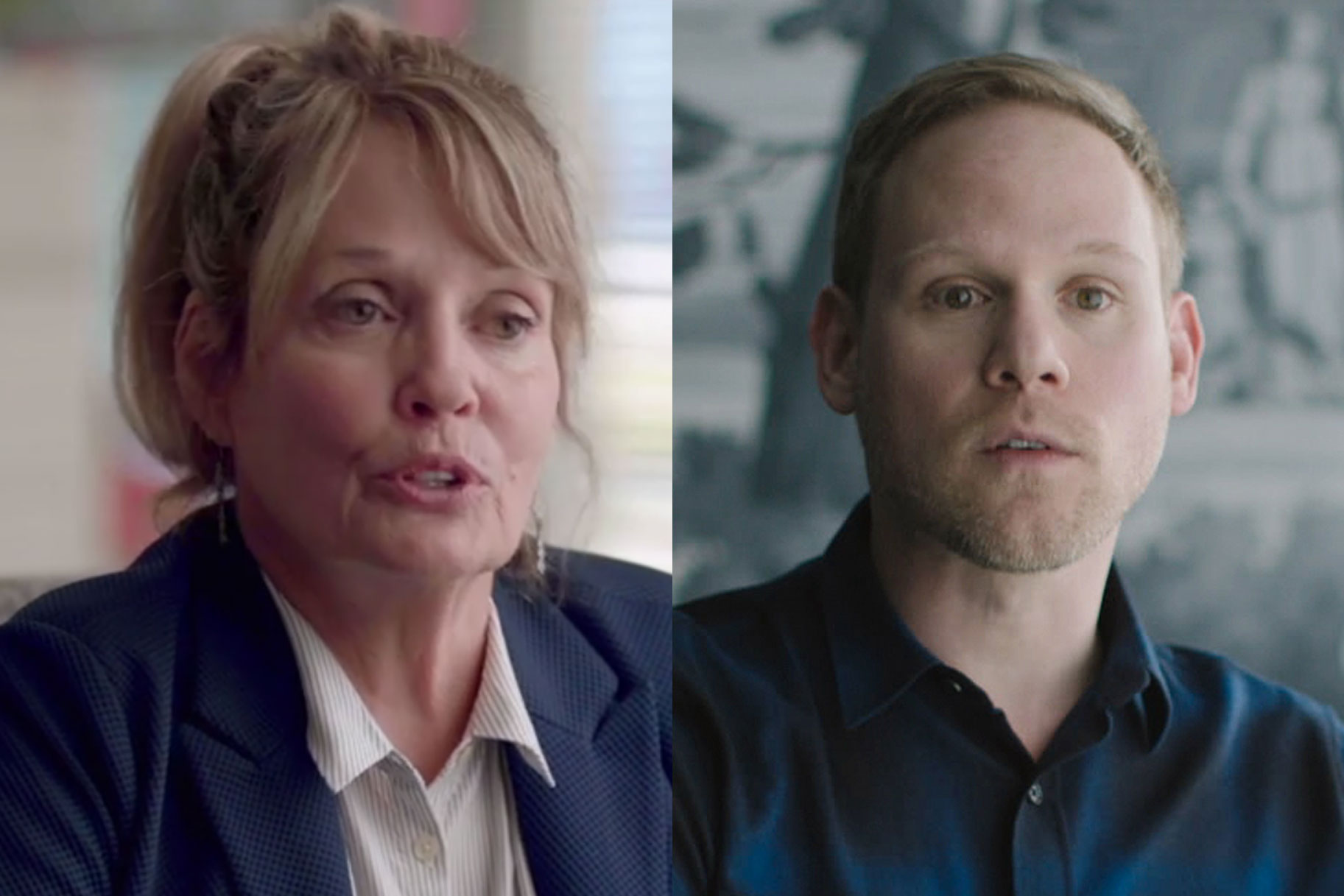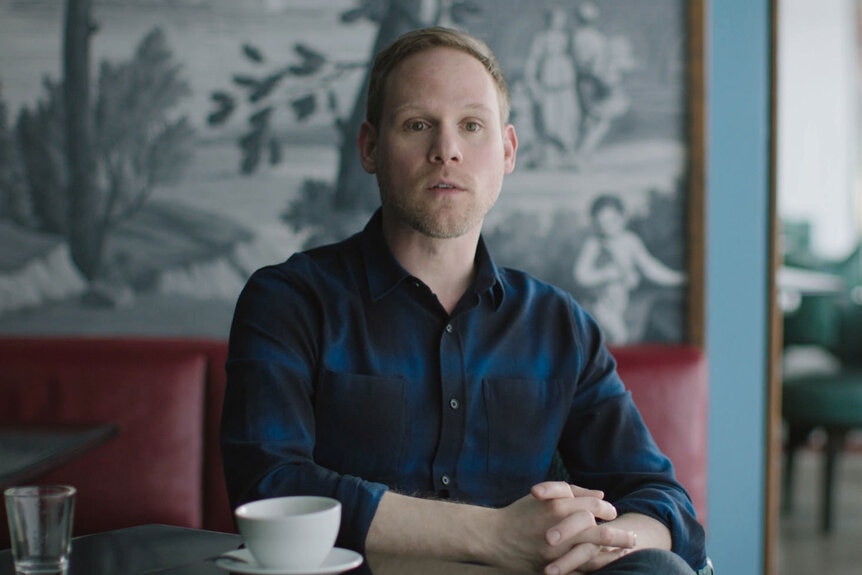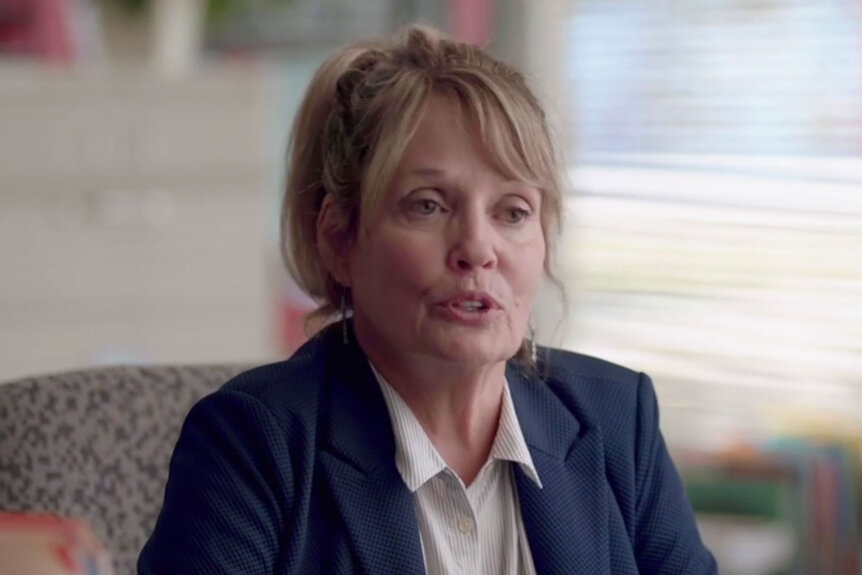Create a free profile to get unlimited access to exclusive videos, breaking news, sweepstakes, and more!
How Did Paul Haynes And Melanie Barbeau Help Michelle McNamara In Hunt For The Golden State Killer?
Michelle McNamara met both Paul Haynes and Melanie Barbeau on a message board dedicated to discussing the Golden State Killer.

Author Michelle McNamara helped catch the elusive Golden State Killer but she didn’t do it alone. She had the assistance of several citizen detectives, who like her, were laser-focused on identifying the then-unknown serial killer.
McNamara’s research on the Golden State Killer, which resulted in the 2018 book “I’ll Be Gone in the Dark: One Woman's Obsessive Search for the Golden State Killer,” educated America on the vicious killer responsible for murdering 13 people, raping dozens of women, and terrorizing California in the 1970s and 1980s. She shone a light on the cold case, and pushed for investigators to do genetic testing on evidence.
As a result, the killer — former California cop Joseph DeAngelo — was caught two months after McNamara’s book was published after DNA pushed investigators his way, though police have previously contended they identified DeAngelo independently.
McNamara died in 2016, and tragically she wasn’t able to experience DeAngelo’s arrest nor his 2020 guilty plea.
HBO’s new docuseries "I'll Be Gone in the Dark" — which chronicles McNamara’s quest to identify the Golden State Killer — features interviews with some of the people who worked alongside her on the hunt.
McNamara met so-called citizen detectives on a EAR/ONS cold case message board where she spent much of her time researching the killer, beginning in 2011. EAR stands for East Area Rapist and ONS stands for the Original Night Stalker, both of which were nicknames for the serial killer. McNamara later bestowed the moniker "The Golden State Killer" upon him.
The message board was a gathering point for amateur detectives and sleuths. Nancy Miller, a former deputy editor for Los Angeles Magazine, called them “essentially amateur obsessives who congregate online” and who operate as a “hivemind.”
Two minds from this hive in particular helped McNamara on her quest. As the docuseries points out, she reached out to the two message board members that impressed her the most.
Paul Haynes
In her book, McNamara refers to Paul Haynes as “the Kid,” writing he’s “smart, meticulous” and “the case’s greatest amateur hope.” The South Florida film school graduate, 30 when McNamara began conversing with him, was an expert at data mining. She wrote that he “has spent nearly four thousand hours data mining the possibilities, cold-searching everything from Ancestry.com to USSearch.com.”
McNamara reached out to him through the EAR/ONS message board, which Haynes was thrilled about as he had been a fan of her blog “True Crime Diary” for years. The two began corresponding and Haynes noted in the HBO docuseries that they began sharing notes and “developed a rapport pretty quickly.”
“We just built mutual trust until we were just openly sharing our work with each other and that’s when we discovered that a lot of it had intersected,” he said.
Soon enough, Haynes was living in Los Angeles — where McNamara lived — and McNamara was asking him to become her research collaborator.
“It was a very exciting opportunity to be directly involved with this case and have my interest, which I previously had been ashamed of and felt was impractical and odd, legitimized,” Haynes said in “I’ll Be Gone in the Dark.” (He also served as a co-executive producer on the documentary project.)
He even spent Thanksgiving of 2012 at McNamara’s house as she was working hard at finishing her 2013 Los Angeles Magazine longform article "In the Footsteps of a Killer," which Haynes had an important hand in developing.
“Paul and Michelle were this perfect kind of team because she’s like the lyrics and he’s the tempo,” Miller said in the docuseries. “He did incredible data mining. Something that was really important to Los Angeles Magazine to me as an editor, to Michelle and to anyone who has been tracking this case is making sure that you got your facts straight and we relied on Paul a lot. He would just go laser deep and what Michelle could do was spin these stories in a really beautiful way.”
The pair also explored geo-profiling, analyzing crime locations to in hopes of pinpointing where the killer lived, as a way to crack the case. He spent countless hours examining maps and then he'd share his theories with McNamara, the Miami New Times reported in 2018.
Haynes helped McNamara obtain 37 boxes of police reports and documents, and he explained in the docuseries that them felt like heist, which became pivotal to her research and to her book.
He then went on to help finish McNamara's book after her sudden death in 2016. Haynes, along with crime writer and citizen detective Billy Jensen, wrote chapter three of McNamara's book together. Haynes and Jensen were given access to her hard drives a week after she died. They then dove in deep into all 3,500 files on the Golden State Killer. Haynes and Jensen wrote about McNamara's research methods, her books notes, her theories that the killer could have been an airman as well as her and Haynes' attempt to uncover his identity using geo-profiling.
The chapter also dives into McNamara's theory about genetic genealogy. Ultimately, she was right as it was a DNA match that eventually led to his capture.
"DNA was the thread Michelle felt was the best way to get out of the maze of the Golden State Killer."
Haynes and Jensen, along with McNamara's husband Patton Oswalt spent about a year and a half finishing up the book for McNamara, according to the Miami New Times. The three did book events together, following the book's release.
Melanie Barbeau
In McNamara’s book, she refers to Barbeau — a high school social worker who lives in Sacramento, where many of DeAngelo’s crimes occurred — as “the Social Worker.” She wrote that Barbeau was a valuable resource of knowledge and that she “operates as a kind of gatekeeper between Sacramento investigators and the board community."
Like with Haynes, McNamara reached out privately to Barbeau after taking appreciation of her knowledge and intricate correspondence on the EAR/ONS message board. As the docuseries noted, McNamara told Barbeau that she found her “really measured and thoughtful” and she wanted to get her insight into a possible suspect.
Ultimately, Barbeau invited McNamara to visit her in Sacramento. McNamara recounted their first meeting, at Barbeau’s workplace, in her book.
“She greeted me in the parking lot by waving her arms wildly overhead,” she wrote. “I liked her right away.”
Barbeau explained in the docuseries that she drove McNamara around to crime scenes for hours, knowing immediately that they would become “lifelong friends forever.”
“Our language just immediately became about the case facts, about what we knew, about this and what do you think of that?” she reflected. “It was a language that probably nobody else could understand what we were talking about unless you had that experience or you were aware of the case. There’s something about two women getting together that have a common cause and a common goal.”
McNamara needed to go to the crime scenes — often homes where couples were terrorized — to get inside the then-faceless killer’s mind, Barbeau said. Barbeau brought McNamara to these locations so that McNamara could better understand the killer — with the end goal of cracking the case and revealing his identity.
Barbeau was present during at DeAngelo's guilty plea.
All the hours of collaborative hard work apparently paid off, as McNamara's research has been credited for helping to catch DeAngelo.
He was admitted last month to killing Claude Snelling, Katie Maggiore, Brian Maggiore, Debra Alexandria Manning, Robert Offerman, Cheri Domingo, Greg Sanchez, Charlene Smith, Lyman Smith, Patrice Harrington, Keith Harrington, Manuela Witthuhn, and Janelle Cruz. He has also now been convicted on 13 rape-related charges.
DeAngelo is expected to be sentenced the week of August 17. In exchange for his plea deal, the elderly DeAngelo will dodge the death penalty and is expected to serve 15 consecutive life sentences instead.




























